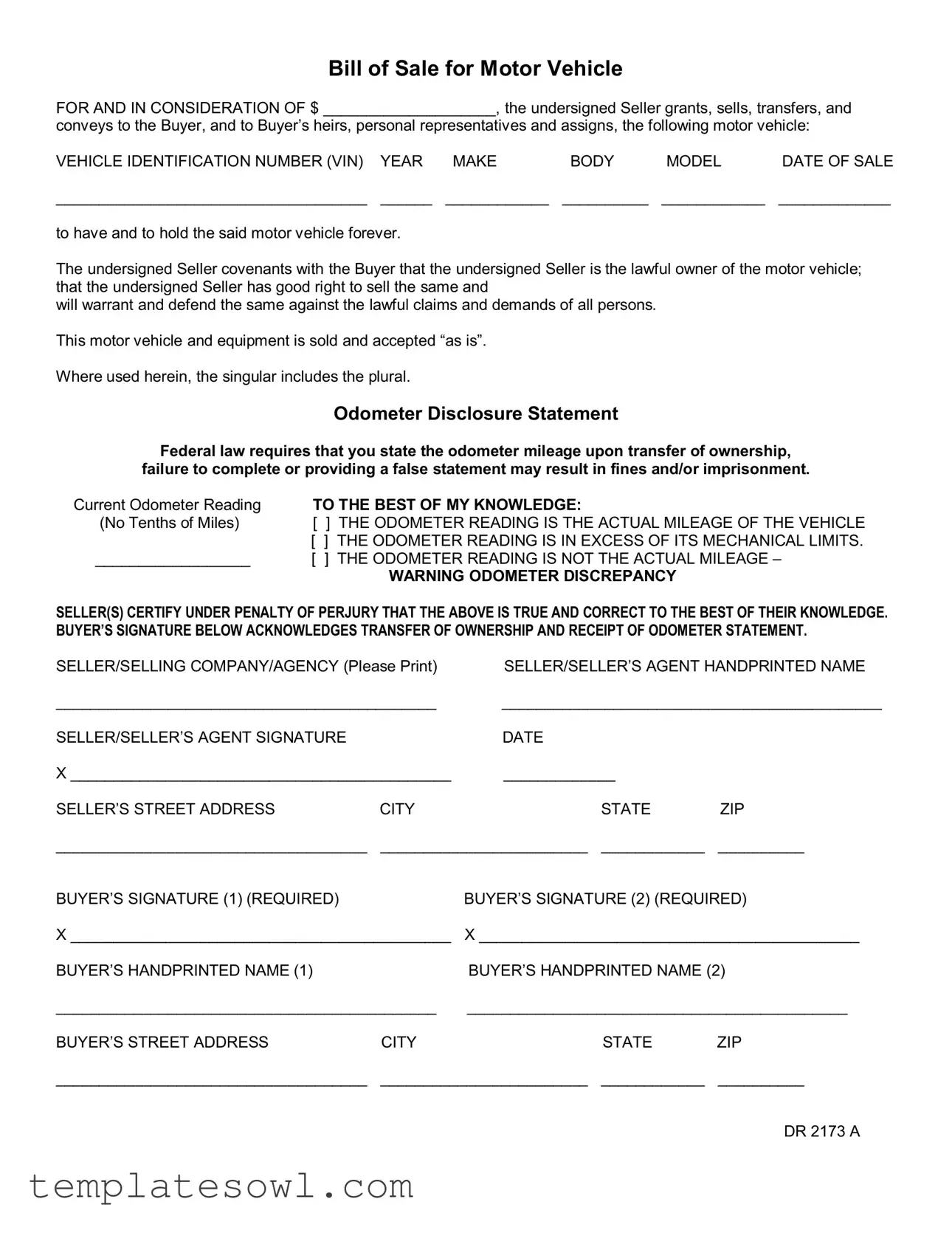What is the purpose of the DR 2173 A form?
The DR 2173 A form serves as a bill of sale for motor vehicles. It legally transfers ownership from the seller to the buyer. By using this form, both parties document the sale, including crucial details such as the vehicle identification number (VIN), make, model, year, and sale date. This ensures that both parties are clear about the transaction and helps prevent disputes in the future.
What information is needed to complete the form?
To accurately fill out the DR 2173 A form, you will need several key pieces of information. First, you should provide the sale price of the vehicle. Include the vehicle’s VIN, year, make, model, and the date of sale. Additionally, you must disclose the current odometer reading and indicate whether it reflects actual mileage or if there is a discrepancy. Lastly, both the seller and buyer must provide their signatures and addresses, which confirms their agreement to the terms stated in the document.
What does the Odometer Disclosure Statement entail?
The Odometer Disclosure Statement is a federal requirement that mandates the seller to report the mileage on the vehicle at the time of sale. This is crucial because it helps protect the buyer from potential fraud. If the seller provides false information or fails to complete this section, it could lead to serious penalties, including fines or imprisonment. To avoid issues, sellers should ensure that the odometer reading is accurate to the best of their knowledge.
Is the vehicle sold "as is"? What does that mean?
Yes, the DR 2173 A form indicates that the vehicle is sold "as is." This means that the seller does not provide any warranties or guarantees regarding the vehicle's condition. Buyers accept the vehicle with all its existing faults, whether known or unknown. It’s important for buyers to thoroughly inspect the vehicle before completing the sale, as they are responsible for any repairs or issues that may arise after the purchase.
Do I need a notary to sign the DR 2173 A form?
No, the DR 2173 A form does not require notarization. However, it is crucial that both the seller and buyer sign the document. Their signatures confirm the legitimacy of the sale and the accuracy of the provided information. Having the form witnessed or keeping a copy for personal records can be beneficial for both parties in case of future disputes.
What should I do after completing the DR 2173 A form?
Once you complete the DR 2173 A form, both parties should keep a copy for their records. The seller should submit any necessary documents to the local Department of Motor Vehicles (DMV) to complete the vehicle transfer process. The buyer will want to ensure that the title is re-registered in their name. Keeping all paperwork organized can aid in future transactions or in case any issues arise.
